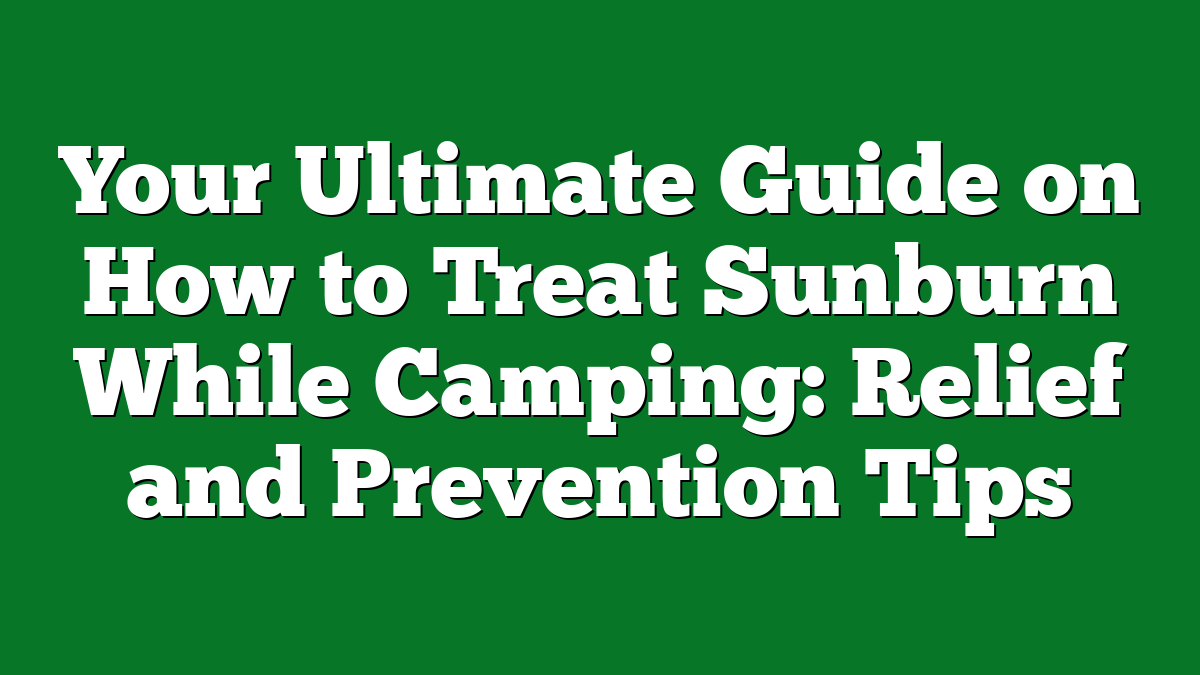Camping in a bivy sack can be one of the most freeing experiences out there. There’s something magical about being close to nature while still having a cozy spot to rest your head. Whether you’re a seasoned backpacker or trying it for the first time, getting the hang of bivy camping can make all the difference.
Choosing the Right Bivy Sack
Selecting the right bivy sack is crucial for a comfortable camping experience. I focus on specific features and materials when making my choice to ensure reliability.
Features to Look For
- Weather Protection: Seek a bivy sack with waterproof and breathable fabric. This keeps moisture out while allowing sweat to escape, ensuring comfort in various conditions.
- Size and Weight: Verify that the sack fits my body comfortably without excess weight. A compact, lightweight option is easier to carry on extended trips.
- Ventilation: Prioritize bivies that incorporate mesh panels. Adequate airflow prevents condensation buildup, enhancing the overall experience.
- Entry Method: Evaluate the entry style, whether it’s a side or top zip. I prefer a design that offers quick access without fumbling in the dark.
- Insulation: Consider bivies with built-in insulation for colder conditions. A little extra warmth makes a significant difference on chilly nights.
Material Considerations
- Waterproof Fabrics: Look for materials like Gore-Tex or other high-quality waterproof textiles. They provide essential protection against rain and dampness.
- Durability: Opt for ripstop nylon or polyester fabrics. These materials resist tears and wear from rough terrain and abrasion.
- Weight: Weigh the advantages of lighter materials like silnylon against potential durability issues. Lightweight options are ideal for minimalist backpackers but might lack longevity compared to heavier models.
- Breathability: Choose fabrics designed for breathability. This feature is critical for hot weather or intense activity, helping to regulate temperature and moisture levels inside the sack.
Selecting the right bivy sack with these key features and materials ensures a more enjoyable camping adventure.
Preparing for Your Camping Trip
Preparing for a camping trip in a bivy sack involves careful planning and the right gear. This ensures comfort and safety throughout your adventure.
Essential Gear to Pack
- Bivy Sack: Choose a lightweight, durable bivy sack with weatherproof features. Look for quality materials like Gore-Tex or ripstop nylon to keep dry.
- Sleeping Bag: Select a compact sleeping bag rated for the season. A three-season bag works well for most conditions.
- Sleeping Pad: Pack a sleeping pad to insulate against the cold ground and provide cushioning.
- Headlamp or Flashlight: Bring a reliable headlamp or flashlight for nighttime activities. Ensure you have extra batteries to avoid being caught in the dark.
- Multi-tool: Include a multi-tool for various tasks around the campsite. Versatility is key when you’re in the wild.
- Food and Cooking Supplies: Plan meals and pack lightweight, non-perishable foods. Don’t forget a compact stove or cooking system and utensils.
- Water Filtration System: Carry a water filter or purification tablets to ensure access to clean drinking water.
- First Aid Kit: Always bring a basic first aid kit for emergencies.
- Navigation Tools: Include a map, compass, or GPS device to stay oriented in unfamiliar terrain.
Choosing a Campsite
Selecting the right campsite enhances your bivy camping experience. Prioritize these factors:
- Dry, Level Ground: Look for a flat area free from rocks and debris. Choose a location above potential water runoff to stay dry.
- Natural Windbreaks: Find spots protected from strong winds, such as near trees or ridges, to shield yourself from harsh weather.
- Proximity to Water: Camp close to a water source for easy access, but maintain a safe distance to avoid flooding and insects.
- Distance from Trails: Select a site away from busy trails to enjoy peace and solitude. Respect wildlife and fellow campers.
- Safety from Hazards: Avoid camping under dead trees or in areas prone to rockfall. Assess the terrain and risks before settling in.
Taking these factors into account ensures a safe and enjoyable camping experience in your bivy sack.
Setting Up Your Bivy Sack
Setting up your bivy sack requires a bit of finesse to maximize comfort and safety. Choosing the right location and preparing the ground carefully makes a significant difference in your outdoor experience.
Location and Ground Preparation
- Choose Level Ground: Look for an even, flat surface free from rocks, roots, or debris. Level ground enhances comfort and keeps the bivy sack stable overnight.
- Select a Dry Spot: Avoid low-lying areas where water collects. Wet ground can seep into your bivy sack and dampen your gear.
- Natural Windbreaks: Position near trees or bushes to shield against strong winds. This provides added comfort and protection from the elements.
- Proximity to Water: Stay close to water sources for drinking and cooking, but maintain a safe distance to avoid unexpected flooding. A distance of 200 feet is a solid guideline.
- Safety Considerations: Be mindful of potential hazards like falling branches or wildlife trails. Choosing a safe distance from such areas ensures a secure camping spot.
Ventilation Tips
- Adjust Entry Flaps: Most bivy sacks have adjustable entry flaps. Slightly open these to allow fresh air in while maintaining weather protection.
- Choose Breathable Fabrics: Opt for a bivy sack made from breathable materials. This helps wick moisture away during the night, keeping condensation to a minimum.
- Consider Temperature: In warmer conditions, keeping the entry flap open increases airflow. For cooler nights, sealing it up retains warmth, ensuring comfort throughout the night.
- Use a Head Net: Incorporate a head net if bugs are prevalent. This provides ventilation while protecting against insects.
- Utilize the Fly: If your bivy sack includes a rainfly, use it during rainy weather. This adds an extra layer of protection while still allowing for some airflow underneath.
Following these tips ensures a smoother setup and a more enjoyable bivy camping experience. Embrace the wild, and let your bivy sack be your cozy retreat under the stars.
Staying Comfortable in a Bivy Sack
Staying comfortable in a bivy sack is crucial for a good night’s sleep, especially when you’re out in the wild. I’ve found that certain strategies can make a significant difference in how well you rest.
Sleeping Pads and Bags
Choosing the right sleeping pad and bag enhances comfort in your bivy sack. I recommend a lightweight, inflatable sleeping pad for insulation and cushioning. Look for a pad with an R-value of at least 3 to 4 for cool nights. As for sleeping bags, opt for one that’s rated for temperatures lower than you expect to encounter. A mummy-style bag hugs your body, providing warmth and conserving heat. I typically use a synthetic bag for its moisture-wicking properties, which is a lifesaver in damp conditions.
Clothing Choices
Making smart clothing choices can significantly impact your comfort level. I always layer my clothing based on the temperature forecast. Start with moisture-wicking base layers to keep sweat away from my skin. Next, add insulating layers like fleece or down to retain warmth, and finish with a waterproof, breathable outer layer for protection against the elements. Don’t forget a warm hat and gloves; they can make a significant difference at night. Wearing dry, comfortable socks also helps; I typically pack an extra pair to change into before bed. This approach keeps me cozy and ready to face the next day’s adventures without feeling sluggish.
Safety Tips for Bivy Camping
Camping in a bivy sack can be an amazing adventure, but safety remains a top priority. Here are some essential tips to ensure a secure and enjoyable experience.
Weather Preparedness
Preparing for varying weather conditions sets the stage for a successful bivy camping trip. I always check the forecast before heading out, paying close attention to temperature fluctuations and potential precipitation. Packing a weatherproof bivy sack makes a big difference. I also carry an extra rainfly for added coverage. When camping in cold regions, layering is key; I use insulated clothing and bring warm blankets. Keeping an eye on wind conditions helps me find a safe spot. Positioning myself under natural windbreaks, such as trees or rock formations, shields me from strong gusts. Staying aware of sudden weather changes allows me to quickly adjust my setup, ensuring comfort throughout the night.
Wildlife Awareness
Wildlife can be both fascinating and risky. I always store food securely in bear-proof containers, keeping it at least 100 feet away from my sleeping area. I follow the “leave no trace” principles, minimizing my impact on the environment and reducing unwanted animal encounters. Making noise while hiking helps alert wildlife to my presence, giving them time to avoid me. When camping, I avoid strong-smelling toiletries and food to limit attracting animals while I sleep. Keeping a flashlight handy makes nighttime movements safer, alerting me to any wildlife nearby. If I spot animal tracks or signs, I maintain a safe distance and remain cautious. Respect for wildlife enhances my outdoor experience and keeps me safe in the wild.
Conclusion
Camping in a bivy sack can truly transform your outdoor experience. It’s all about embracing simplicity and connecting with nature in a whole new way. By choosing the right gear and prepping properly you can enjoy the freedom that comes with this style of camping.
I’ve found that being mindful of my surroundings and making smart choices about my setup can make all the difference. Whether you’re a seasoned pro or just starting out I hope you feel inspired to give bivy camping a try. There’s something special about falling asleep under the stars and waking up to the sounds of the wild. Happy camping!











